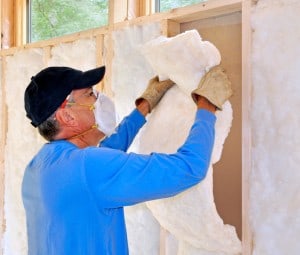Home insulation is paramount to the proper heating and cooling of a home. While insulation in a newer or custom-built house is usually high quality, insulation in an older home wears with age. If worn insulation is not replaced, it could mean a significant increase on the electricity bill, a cold house in winter or a sauna during the summer, among many other problems.
Does your home’s insulation require replacement? To find out if it’s time, here are some signs of insulation degradation:
- High utility bills: Since heating and air conditioning typically account for a significant portion of the utility bill, a spike often means the system is flipping on frequently to account for a cold or warm draft in the house, depending on the season. Replacing the insulation will regulate the temperature and lower the monthly bill.
- Inconsistent room temperatures: Inadequate insulation can result in inconsistent temperatures. It might be a bathroom that’s especially cold or a living room that’s burning up. Stepping into that room feels different compared with other rooms, which is a sure sign of an insulation issue.
- Signs of aging: Insulation that was installed in older homes was of lower quality than the insulation installed in homes today. The best way to test for quality is to put on a glove and feel the insulation in the attic. If it starts to crumble, it’s time to replace it with newer, sturdier insulation that will last longer. And just because a home is older, that doesn’t mean there aren’t any green options available.
- Pests: You like your home to be cozy, and so do pests. Insects and other pests like to make their homes in insulation, especially in attics and basements. If you ever have an infestation in your home, it’s important to check the insulation. If there are any signs of infestation, it’s best to have it replaced to avoid future pest problems.
- Water damage: When there are heavy rains or flooding, water can seep through the roof or walls into the insulation. If the insulation isn’t properly dried afterward, it starts to mold. If you live in an area with high moisture or go through a flood, there’s a chance the insulation will need to be replaced.
While homeowners can install new insulation as a DIY project, removing drywall and installing insulation behind it can be difficult and leave holes behind. Professional insulation installers know how to lay insulation and reinstall drywall, keeping everything consistent and smooth by the end of the job. Home insulation costs vary by city, square footage and professional, but nationally the job averages between $1,400 and $1,800. Homeowners should be sure to get insulation replaced before the extreme temperatures of summer and winter, especially if they live in climates where temperatures could reach highs of more than 100 degrees or lows of 40 below.
About Andrea Davis
Andrea Davis works for HomeAdvisor, which helps homeowners find the right home improvement professionals for their home projects at the right price. Homeowners can use HomeAdvisor Reviews to see what past customers have to say about each professional, and can calculate average local and national costs for a variety of home projects using Cost Guides. Access to all information and features is free for homeowners.
Note: This is a guest post; the views and opinions expressed are those of the author and do not necessarily reflect the opinion or position of Redfin.



























 United States
United States Canada
Canada